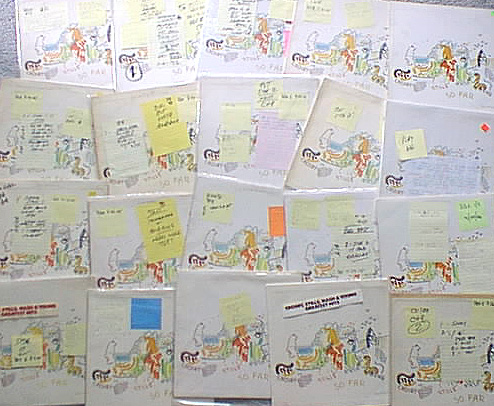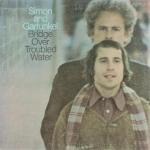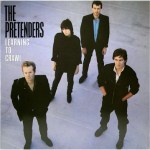
More of the music of Edvard Grieg (1843-1907)
Reviews and Commentaries for Peer Gynt
Sonic Grade: C+
The Fjeldstad has long been one of our favorite performances of Peer Gynt here at Better Records.
This record is handy for VTA set-up as well, a subject discussed below in our listing from 2010.
The sound is excellent for a modern reissue*, but in the loudest sections the orchestra can get to be a bit much, taking on a somewhat harsh quality. (The quieter passages are superb: sweet and spacious.)
So I adjusted the VTA a bit to see what would happen, and was surprised to find that even the slightest change in VTA caused the strings to lose practically all their rosiny texture and become unbearably smeared.
This is precisely why it’s a good heavy vinyl pressing for setting up your turntable.
If you can get the strings to play with reasonably good texture on this record you probably have your VTA set correctly.
VTA
Correct VTA adjustment for classical records (as well as all other kinds of records) is critical to their proper reproduction. If you do not have an arm that allows you to easily adjust its VTA, then you will just have to do it the hard way (which normally means loosening a set screw and moving the arm up and down until you get lucky with the right height).
Yes, it may be time consuming, it may in fact be a major pain in the ass, but there is no question in my mind that you will hear a dramatic improvement in the sound or your records once you have taken the time to correctly set the VTA, by ear, for each and every record you play.
We heard the improvement on this very record, and do on all the classical LPs (and all other kinds of records) we play.
The Big Caveat
As for the asterisk (*) in the first line above, it concerns the caveat “…for a modern reissue…” What exactly do we mean by that? Allow us to reprint what we wrote about another Heavy Vinyl classical pressing, one that we used to like.
We cracked open the Speakers Corner pressing of Rimsky-Korsakov’s The Tale of Tsar Saltan in order to see how it would fare against a pair of wonderful sounding Londons we were in the process of shooting out a while ago. Here’s what we heard in our head to head comparison.
The soundstage, never much of a concern to us at here at Better Records but nevertheless instructive in this case, shrinks roughly 25% with the new pressing; depth and ambience are reduced about the same amount. Similar and even more problematical losses can be heard in the area of top end extension.
But what really bothered me was this: The sound was just so VAGUE.
There was a cloud of musical instruments, some here, some there, but they were very hard to SEE. On the Londons we played they were clear. You could point to each and every one. On this pressing it was impossible.
Case in point: the snare drum, which on this recording is located toward the back of the stage, roughly halfway between dead center and the far left of the hall. As soon as I heard it on the reissue I recognized how blurry and smeary it was relative to the clarity and immediacy it had on the earlier London pressings. I’m not sure how else to describe it – diffuse, washed out, veiled. It’s just vague.
This particular Heavy Vinyl reissue is more or less tonally correct, which is not something you can say about many reissues these days. In that respect it’s tolerable and even enjoyable. I guess for thirty bucks that’s about the most you can hope for.
But… when I hear this kind of sound only one word comes to mind, a terrible word, a word that makes us recoil in shock and horror. That word is DUB. This reissue is made from copy tapes.
Copies in analog or copies in digital, who is to say, but it sure ain’t the master tape we’re hearing, of that we can be fairly certain. How else to explain such mediocre sound?
Yes, the cutting systems being used to master these vintage recordings aren’t very good; that seems safe to say. Are the tapes too old and worn? Is the vinyl of today simply not capable of storing the kind of magical sound we find so often in pressings from the ’50s, ’60s and ’70s?
To all these questions and more we have but one answer: we don’t know. We know we don’t like the sound of very many of these modern reissues and I guess that’s probably all that we need to know about them.
If someone ever figures out how to make a good sounding modern reissue, we’ll ask them how they did it.
Until then it seems the question is moot.
Back in 2011 we stopped carrying Heavy Vinyl and other Audiophile LPs of all kinds. So many of them don’t even sound this good, and this is the kind of sound that just bores us to tears.
This record is disappointing in a number of ways that we believe are important to the proper presentation of orchestral music.
If you own a copy, listen for the things we’ve identified in the sound that came up short.
Here are some of the other records that we’ve found are good for testing the specific qualities that the Speakers Corner pressing lacks.
 More of the Music of Earth, Wind and Fire
More of the Music of Earth, Wind and Fire
 But most people will never know what they’re missing on Helplessly Hoping, because they will never have an amazing sounding copy of the album. The hot copies are just too rare.
But most people will never know what they’re missing on Helplessly Hoping, because they will never have an amazing sounding copy of the album. The hot copies are just too rare.
 More of the Music of Simon and Garfunkel
More of the Music of Simon and Garfunkel



